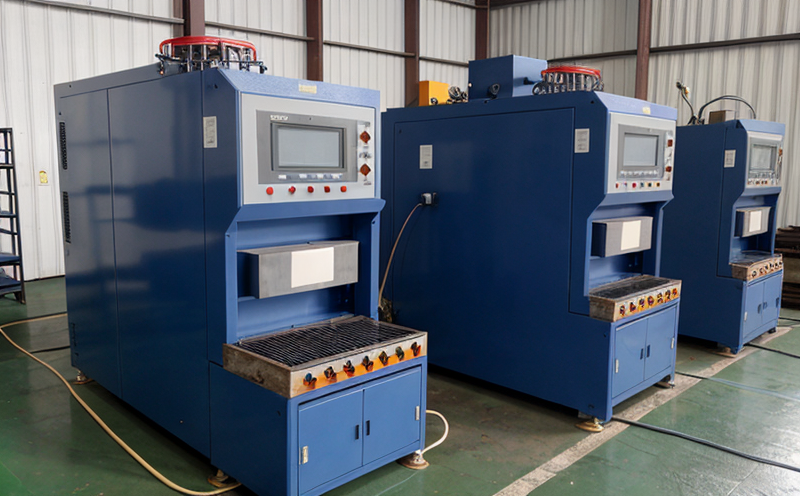NF T30 003 Rubber Raw Material Hardness Testing
The NF T30-003 standard is designed to provide a standardized method for determining the hardness of raw rubber materials. This test is critical in industrial manufacturing and processing, where ensuring the quality and consistency of raw materials can significantly impact product performance and durability.
Hardness testing helps manufacturers evaluate how well their rubber components will withstand various stresses during production and use. Understanding this parameter allows for better control over the formulation process and enhances decision-making regarding material selection. For instance, in industries like automotive, aerospace, and footwear, selecting appropriate raw rubber materials is paramount to ensure that end products meet safety standards and customer expectations.
The NF T30-003 method uses a durometer indentation technique to measure hardness. This involves applying pressure with a specific indenter onto the surface of the sample until it reaches an equilibrium point. The depth at which this occurs is then used to calculate the hardness value according to predefined scales, most commonly Shore A or Shore D.
Proper specimen preparation is essential for accurate results; samples must be free from contamination and representative of the batch they are sourced from. Specimens should also be conditioned appropriately before testing—this may involve temperature stabilization or exposure to humidity depending on the material properties being evaluated.
The test procedure outlined in NF T30-003 specifies detailed steps for preparing specimens, setting up equipment, performing measurements, and interpreting results. Compliance officers rely heavily on this information to ensure their laboratories meet regulatory requirements while R&D engineers use it as part of ongoing development efforts aimed at optimizing product designs.
One key aspect of NF T30-003 is its emphasis on repeatability and reproducibility within laboratory environments. By adhering strictly to prescribed procedures, labs can generate reliable data that supports informed decisions about raw material purchases and process improvements. This consistency is especially important when dealing with batch-to-batch variations or supplier changes.
Another critical feature of this standard lies in its applicability across different types of rubber compounds used in various sectors such as automotive tires, conveyor belts, gaskets, seals, and footwear soles. It ensures uniformity among diverse applications which helps prevent discrepancies between expected performance characteristics and actual outcomes.
In summary, NF T30-003 provides a robust framework for assessing the hardness of rubber raw materials ensuring high quality standards throughout industrial manufacturing processes. Its relevance extends beyond just laboratory settings to include production floors where accurate measurements play an integral role in maintaining consistent product quality.
Applied Standards
| Standard | Description |
|---|---|
| NF T30-003 | French standard for testing the hardness of rubber raw materials using a durometer. |
| ASTM D1415 | American Society for Testing Materials' standard covering similar tests but applicable internationally. |
Scope and Methodology
| Scope | Description |
|---|---|
| Measurement of hardness in rubber raw materials. | Determines the resistance to indentation using a specified indenter on prepared samples under controlled conditions. |
| Applicability across various industrial sectors. | Incorporates differences in material types and intended uses within these sectors ensuring consistent testing procedures. |
| Methodology | Description |
|---|---|
| Specimen preparation. | Ensure samples are representative of the batch, free from contamination, and properly conditioned according to specified temperature and humidity levels prior to testing. |
| Equipment setup. | Calibrate instruments accurately following manufacturer guidelines before initiating tests. Place specimens on test stands ensuring correct alignment with indenter. |
| Data collection. | Record indentation depth at equilibrium point for each measurement. Calculate hardness values based on these readings using appropriate formulas defined by the standard. |
Benefits
- Ensures uniformity in material properties across batches and suppliers.
- Simplifies compliance with international regulations governing rubber products.
- Enhances decision-making by providing precise data on raw material performance.
- Fosters innovation through accurate evaluation of new compounds and formulations.
- Reduces waste and rework due to incorrect material selection or improper processing.
- Promotes safer work environments by identifying potentially hazardous materials early in the production cycle.
- Sustains competitive advantage by maintaining consistent product quality standards globally.





